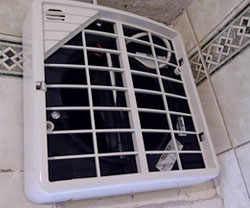Heat Recovery Ventilation
Many home and building owners assume that the natural flow of air between their indoor space and the area outside of a structure will keep the quality of their indoor air and moisture levels under control. However, ongoing research has determined that this assumption may be incorrect. In order to actually accomplish these goals, methods beyond what’s typically considered to be natural ventilation may be required.
What is Heat Recovery Ventilation?
A heat recovery ventilator is a balanced system. The way this system works is by matching a supply of fan-powered airflow with an exhaust airflow that is also fan-powered. By adding a heat recovery ventilation unit to your home, you will be able to successfully transfer heat. You will also be able to keep moisture levels in an optimal range. If you’re wondering whether or not your home needs this type of system, it more than likely can benefit from having one added. What’s nice about this type of ventilation is it will help keep your home at the right temperature and moisture levels throughout the year.
How Much Does a Heat Recovery Ventilation System Cost?
The total cost of this type of system will cost between one and three thousand dollars. While this may seem like a lot of money, you have to keep in mind that this cost includes all of the labor required to complete the installation of this system. Additionally, once a heat recovery ventilation system has been installed, it will be able to reduce your home's energy consumption. As a result, this type of improvement will help you save money on a long-term basis.
What Factors Influence the Design of a Heat Recovery Ventilation System?
Some of the most important factors that will influence the final design of your heat recovery ventilation system are:
- Where the intake is located in relation to other vents
- Providing an inlet for every significantly sized room
- Adding outlets to rooms that create a lot of moisture
- Minimizing the length of duct runs

Categories
- Home
- Types Of Loft Ventilation
- Attic Ventilation
- Heat Recovery Ventilation
- Industrial Loft Ventilation
- Loft Roof Space Ventilation
- Natural Ventilation
- Pigeon Loft Ventilation
- Positive Pressure Loft Ventilation System
- Proper Roof Ventilation
- Roof Ventilation
- Soffit Loft Ventilation
- Solar Ventilation
- Loft Ventilation Companies
- Loft Ventilation Information
- Loft Ventilation Products
